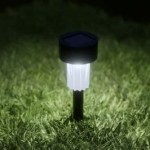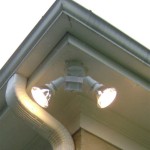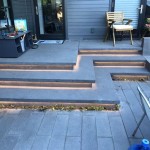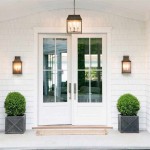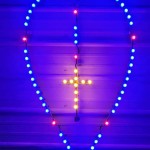Outdoor Lighting Junction Box: Essential Aspects to Consider
Outdoor lighting junction boxes play a pivotal role in ensuring the safety and functionality of your outdoor lighting system. They provide a centralized point for connecting wires, protecting them from the elements, and making maintenance tasks easier. When choosing and installing an outdoor lighting junction box, it's essential to consider certain key aspects to ensure optimal performance and longevity.
Material and Durability
The material of the junction box is crucial for its durability and ability to withstand harsh outdoor conditions. Metal junction boxes, such as those made of aluminum or stainless steel, offer excellent corrosion resistance and protection against impact. Plastic junction boxes, while more affordable, may not be as durable and may degrade over time due to exposure to UV rays and temperature fluctuations.
Size and Capacity
The size of the junction box should be appropriate for the number of wires and connections it will accommodate. Overcrowding the junction box can lead to overheating and potential fire hazards. Conversely, a junction box that is too large will waste space and may be more difficult to conceal. Determine the number of wires and connections you need to make and choose a junction box with ample capacity.
Ingress Protection (IP) Rating
The IP rating of a junction box indicates its level of protection against water and dust penetration. For outdoor applications, it's recommended to choose a junction box with an IP rating of at least IP65. This rating ensures that the box is protected against water jets from any direction and against dust ingress that could interfere with electrical connections.
Knockouts and Cable Entries
Junction boxes typically come with pre-drilled knockouts or cable entries for bringing wires in and out. These knockouts can be removed to accommodate different cable sizes and types. Ensure that the knockouts are appropriately sealed with rubber or plastic grommets to prevent water ingress and maintain the IP rating of the junction box.
Accessibility and Serviceability
Outdoor lighting junction boxes should be accessible for easy maintenance and repairs. Position the junction box in a convenient location where it can be easily reached and inspected. Consider using a weatherproof cover to protect the junction box from the elements and prevent unauthorized access.
Grounding and Bonding
Proper grounding and bonding are essential for ensuring the safety of your outdoor lighting system. The junction box should be grounded using a grounding wire connected to the main electrical panel. Additionally, the junction box should be bonded to all metal components of the lighting system, such as light fixtures and conduit, to prevent electrical shock hazards.
By carefully considering these essential aspects when selecting and installing an outdoor lighting junction box, you can ensure the safety, reliability, and durability of your outdoor lighting system. Remember to consult with a qualified electrician for proper installation and maintenance, as working with electricity can be dangerous if not handled properly.

How To Install An Exterior Electrical Box For A Light Fixture On The Wood Siding

Replacing An Outdoor Light Fixture Concord Carpenter

Replacing An Outdoor Light Fixture Concord Carpenter

Do Outdoor Lights Need A Junction Box Led Lighting Info

Do Outdoor Lights Need A Junction Box Led Lighting Info

Junction Box Wrong Shape Size For Light Electrical Diy Room Home Improvement Forum Exterior Lighting Outdoor Fixtures

Outdoor Light W No Junction Box Lighting Ceiling Exhaust Fan

Electrical Box For Exterior Light Fixture Greenbuildingadvisor
How To Replace An Outdoor Light

Pro Junction Hub 12v Landscape Lighting Box Amp
